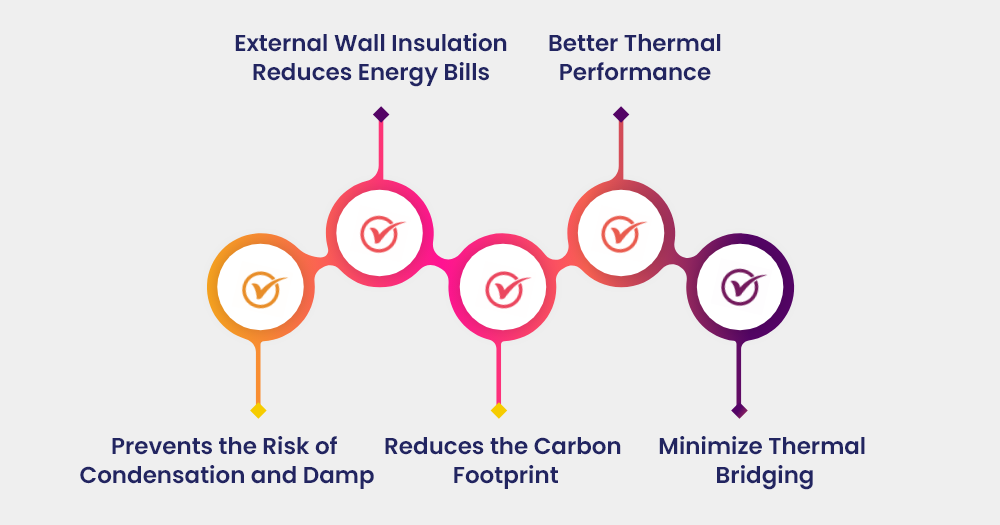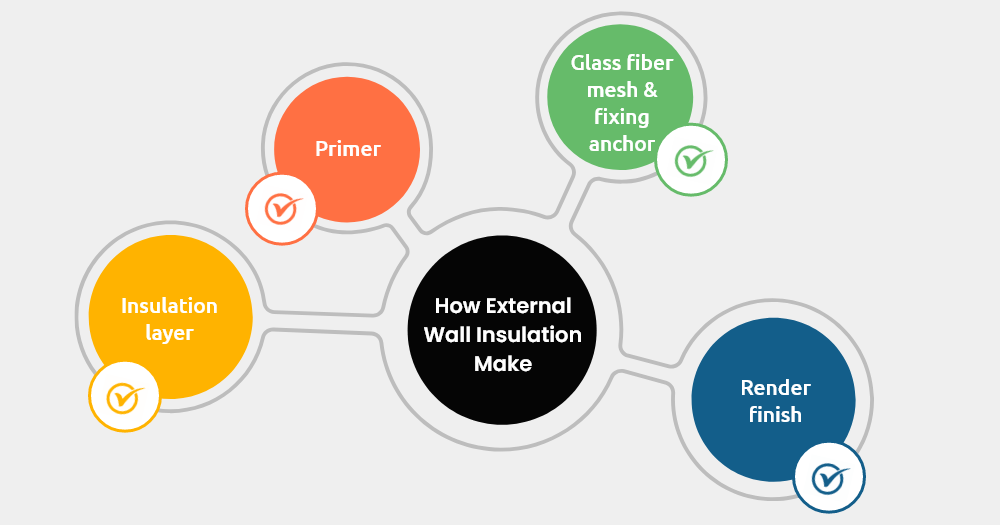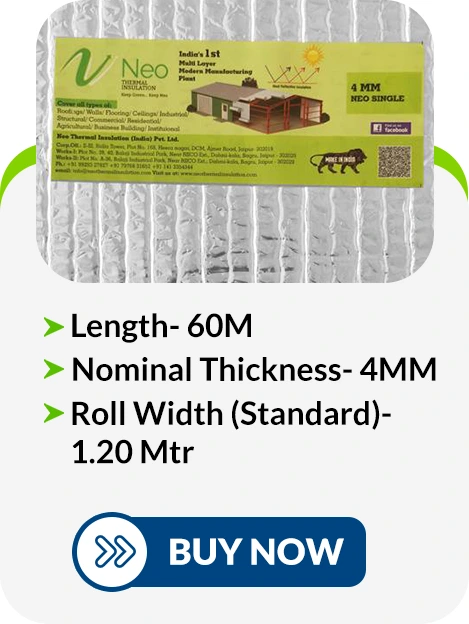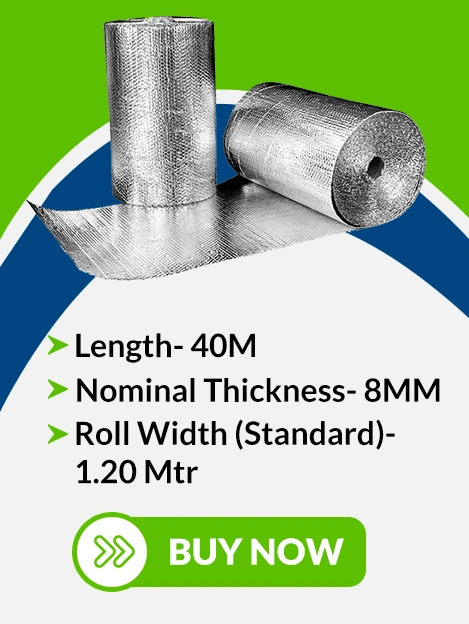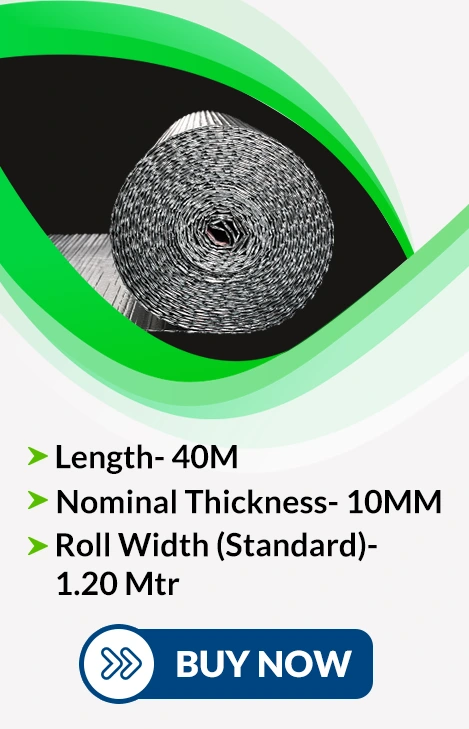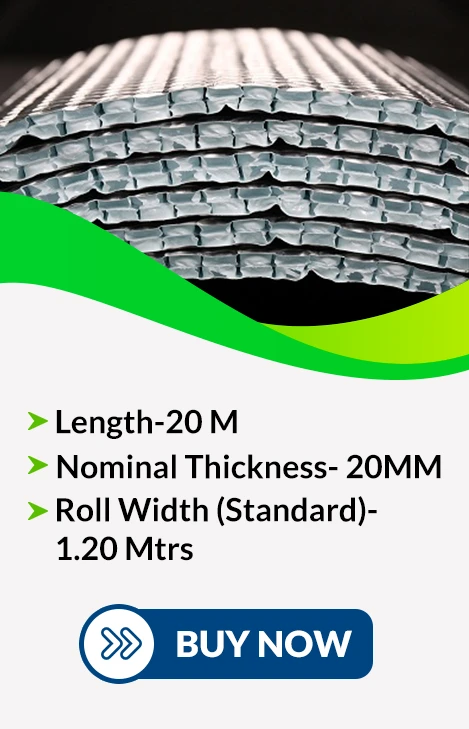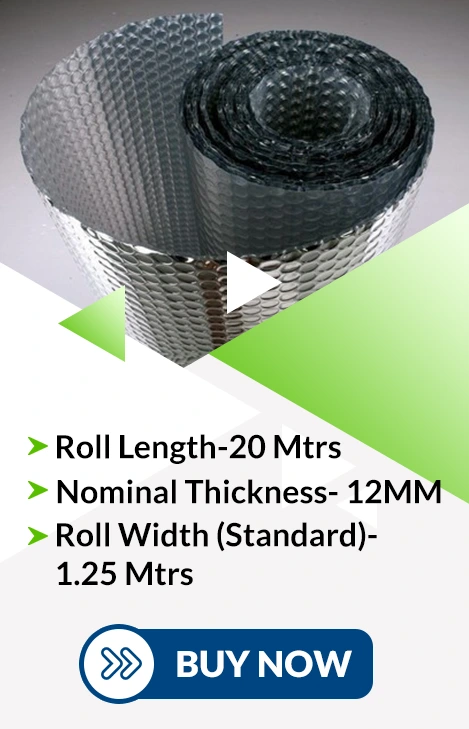External Wall Insulation: Cost and How it Works?
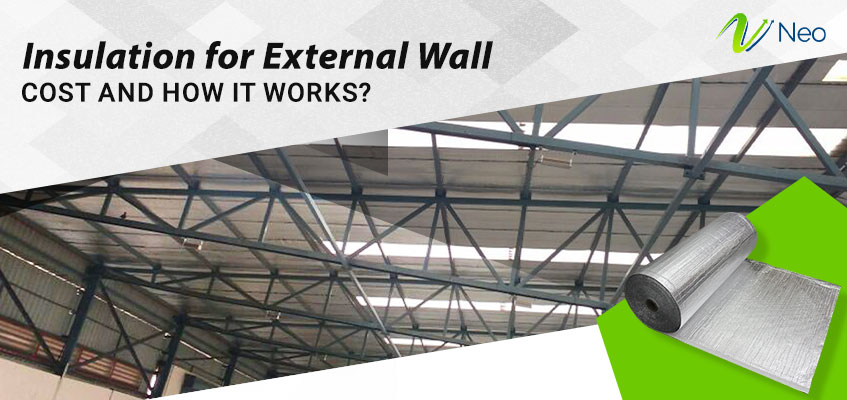
Insulation is a process where some materials are attached to the different surfaces of the building which helps to maintain a good temperature. By cutting the need for energy in air conditioners and heaters, it also becomes a cost-efficient and pocket-friendly option for residential as well as commercial use. At the same time, External Wall Insulation (EWI) plays a significant role in reducing the heat problem, enhancing thermal performance, and thus better maintaining the temperature.
Thanks to the efficiency of these insulation solutions, the exterior insulation and finish systems market was valued at USD 90.2 billion in 2022 which is expected to achieve a valuation of USD 160.3 billion by 2028 with a CAGR of 10.1%.
What is External Wall Insulation?
An external wall insulation system is basically a thermally insulated, decorative exterior cladding procedure in which different materials like polystyrene, polyurethane foam, phenolic foam, and mineral wool are used for insulation. As the name suggests, this insulation is done on the exterior walls of the property which protects heat from entering into the premises from sides. The thickness of the insulation is generally determined according to the requirements with a heat transmission factor of U=0.25-0.3 W/m2K.
What are the Benefits of External Wall Insulation?
Thermal wall insulation in very little time has managed to draw the customer’s attention due to its benefits in energy efficiency and environment-friendly offerings. Not only does it provide temperature comfort, but the cost-efficiency factor makes it a favorite choice of people in different industries. Here are some of the benefits that you can leverage by insulating external walls internally-
-
Better Thermal Performance
The wall insulation helps to enhance the thermal performance of overall insulation around the space. The higher the thickness of the solution, the better the results in energy efficiency. The thermal performance is measured as a U-value that represents the heat lost per square meter of the wall. Closure the U-value is zero, and the least heat is being lost through the walls.
-
Reduces the Carbon Footprint
Thermal insulation encourages the environment’s friendliness and thus plays a major role in reducing carbon emissions. So, when using the walling insulation in the property, one not only improves the carbon footprint but also makes a contribution toward the target of Net Zero by 2050.
-
External Wall Insulation Reduces Energy Bills
The Energy Saving Trust has estimated that up to a third of the heat produced by the heating systems in buildings is lost through the walls and roofs. So, when installed the thermal insulation, the heating cost is reduced by 40%. So, one doesn’t have to pay for all the heat which is being lost through the walls.
-
Prevents the Risk of Condensation and Damp
By using the wall insulation, heat is trapped inside the walls and thus increases the internal temperature of the walls. Airborne moisture that is attracted to the cold walls can not enter the wall with insulation and thus reduces the risks of condensation forming.
-
Minimize Thermal Bridging
Also known as cold bridging, thermal bridging is a particular area of the building with a higher level of heat loss, or transferring the heat immediately to surrounding areas. By insulating external walls internally, such cold spots in the building can be eliminated.
Schedule Your Insulation Installation Today!
What Is External Wall Insulation Cost?
If you are planning to impart a comfortable temperature in your space without spending unnecessary amounts on electricity bills, external wall insulation is the best option for you. However, the cost of installing the wall insulation is always the foremost and biggest concern. So, here is the answer.
The external wall insulation cost depends on a range of factors. For example, choosing between the “Detached, Semi-detached, and Mid-terrace” wall insulators entirely changes the cost. Similarly, the area where you want to install the insulation is the biggest determining factor for the cost. Bigger is the area, the higher will be the cost.
However, to get a rough estimate, the external wall insulation falls anywhere around INR 480/meter.
What Types of Buildings can be Used for External Wall Insulation?
Comfort temperature is preferred everywhere, whether it is residential property or commercial buildings. The use case of wall insulation is very broad where it not only enhances internal temperature for living and working but can also be used for special types of storage facilities. Let’s have a glance over the buildings where the external wall insulation can be installed-
-
-
Residential Homes
-
External wall insulation is used broadly in residential buildings, be it a single-family home or a complete building. It enhances the energy efficiency and reduces the heating and cooling costs.
-
-
Commercial Buildings
-
Such as offices, retail spaces, and warehouses are also a big category where external wall insulation is applied. It helps to improve energy performance and thus provides a more comfortable indoor environment.
-
-
Industrial Facilities
-
Industrial structures like factories and manufacturing facilities install wall insulation that helps maintain interior temperature and lowers energy consumption.
-
-
Institutional Buildings
-
The premises of schools, hospitals, government buildings, colleges, and universities also prefer wall thermal insulation to cope with the external temperature without spending wholesome on electricity.
-
-
New Construction
-
External wall insulation is also incorporated into new buildings to meet modern energy efficiency needs and thus enhance the overall performance of the structure.
How Does External Wall Insulation Work?
The wall insulation material is used to stop the heat loss in the buildings and walls. So, before jumping directly to the working mechanism of the insulation, it is a better idea to understand how the heat is lost in a building. There are basically three ways of heat loss in a building which are conduction, convection, and radiation. The heat travels through the walls, windows, doors, roofs, and floor. So, external wall insulation reduces the heat loss through the walls.
Here’s How EWI Insulation Works-
-
-
Conduction
-
Conduction is the foremost reason why heat is lost inside the wall and transferred to interior space. So, thermal insulation uses materials that are bad conductors of heat. Thus, choosing the right thickness of wall insulation material helps lock the heat inside the walls only, preventing the increased temperature inside the space.
-
-
Convection
-
Convection is the process where the heat moves in the gaseous form and is transferred into the house. The lack of holes or free space makes the temperature higher inside the wall and then the heat is transferred to the building. So, insulating material carries the small voids and air pockets to ensure air movement. The external wall insulation uses the expanding polystyrene slab containing thousands of trapped air pockets and small voids.
-
-
Radiation
-
Further, external insulation for solid walls uses surfaces that emit little radiant energy and absorb a very small amount of radiant energy falling into it.
What is External Wall Insulation Made Up Of?
EWI is a kind of wall insulation material that helps to stop the heat from leaving the wall and increase the temperature of the surrounding space. Mostly, the main insulating material is made up of expanded polystyrene, phenolic boards, and mineral wool. Here are the main components of external wall insulation-
-
-
Insulation layer
-
As the name suggests, this is the main component of thermal insulation which is made up of expanding polystyrene or the mineral wool. Technologies such as phenolic resin insulation are also imparted in this. All of these materials help significantly to prevent heat escape from the walls.
-
-
Primer
-
The main purpose of using a primer is to encourage waterproofing of the system and thus act as a barrier to prevent moisture from passing from the outside in. At the same time, some primer even has inherent insulation properties that help to increase the overall efficiency of a system.
-
-
Glass Fiber Mesh & Fixing Anchor
-
This is basically that component of the wall insulation that helps to hold the first layer of primer to keep it in place while it dries. Once the primer has been set in place, another layer of primer is applied over the first layer.
-
-
Render Finish
-
Render finish is the outermost layer of wall insulation. The purpose of this layer is to enhance the look of insulation and carve the desired designs matching to the interior of the space. There are different types of renders available that customers can choose according to their preferences.
Conclusion
Heating moving out of the wall is one of the major reasons for the increased temperature inside a space. While using air conditioners and other electrical appliances can provide relief, it is not a great idea from a health and financial perspective. So, external wall insulation emerges as one of the best methods to cope up with the increasing heat issues inside the building. Not only it is cost-effective but it also has no negative impact on the health of people when stay inside for too long.
Frequently Asked Questions
1. What is the Best Insulation for External Walls?
Some of the best exterior wall insulations are fiberglass insulation, foam board insulation, spray foam insulation, injection foam insulation, blown-in cellulose insulation, etc.
2. Is Insulating External Insulation a Good Idea?
External wall insulation is a really good idea as it saves significantly in electricity bill, and make a difference in carbon footprint with a better impact on the environment. At the same time, it makes the space more comfortable.
3. How Long Does External Insulation Work?
Being a long-term investment technique, external insulation lasts for around 30 years. So, once installed, you don’t have to worry for at least the next generation.
4. Is it Possible to Use External Wall Insulation With Solid Stone Walls?
Yes, external insulation for solid walls can be installed efficiently from the inside as well as outside. However, it might cost more than a standard cavity wall, but the cost can be justified by reducing the electricity bills.
5. How Long Does External Wall Insulation Take to Install?
It takes approximately 7-10 days for an average semi-detached house to install the external wall insulation.
